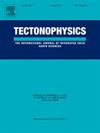华北克拉通组装过程中俯冲的多模态频散反演地震证据
IF 2.6
3区 地球科学
Q2 GEOCHEMISTRY & GEOPHYSICS
引用次数: 0
摘要
华北克拉通前寒武纪基底是由微陆块合并形成的,其合并方式一直存在争议。为了进一步深入了解地下构造,我们利用多模态环境噪声层析成像技术,构建了北陆中、西部地壳和上地幔更详细的横波速度模型。利用中国阵列-喜马拉雅项目548个台站的地震记录,通过频率-贝塞尔变换得到了多模态瑞利波频散曲线。随后,我们采用准牛顿方法反演了60 km深度的横波速度模型。结果表明,在索隆克缝合带以南至内蒙古缝合带的上-中地壳具有向南的低速俯冲特征。这一特征可能代表了古亚洲洋板块向南俯冲的俯冲残余物。此外,该模型还突出显示了横贯华北造山带下方一个向西的地壳内低速下冲体,可能是北陆块古元古代合并俯冲的遗迹。此外,鄂尔多斯地块下地壳广泛分布低速层,可能是北陆块古俯冲-碰撞过程后漫长的构造稳定过程中形成的以硅质为主的下地壳。本文章由计算机程序翻译,如有差异,请以英文原文为准。
Seismic evidence of subduction during assembly of the North China Craton from multimodal dispersion inversion
The Precambrain basement of the North China Craton (NCC) was formed through the merger of micro-continental blocks, the amalgamation mode of which has remained debated. To provide further insights and better understand the underground structures, we construct a more detailed shear wave velocity model of crust and uppermost mantle in the central and western NCC using multimodal ambient noise tomography. The multimodal Rayleigh wave dispersion curves are obtained through the Frequency-Bessel transform, utilizing seismic records from 548 stations in the ChinArray-Himalaya project. Subsequently, we employ the quasi-Newton method to invert the shear wave velocity model to a depth of 60 km. The results reveal a southward low-velocity subduction-like feature in the upper-middle crust south of the Solonker Suture Zone to the Inner Mongolia Suture Zone. This feature likely represents the subduction remnants associated with the southward subducted Paleo-Asian Ocean slab. Additionally, the model highlights a westward intra-crustal low-velocity downthrust body beneath the Trans-North China Orogen, potentially indicating relics of subduction from the Paleoproterozoic amalgamation of the NCC. Moreover, we observe a widely distributed low-velocity layer within the lower crust of the Ordos Block, which may indicate a felsic-dominated lower crust, likely formed during the prolonged tectonic stability following the ancient subduction-collision processes of the NCC.
求助全文
通过发布文献求助,成功后即可免费获取论文全文。
去求助
来源期刊

Tectonophysics
地学-地球化学与地球物理
CiteScore
4.90
自引率
6.90%
发文量
300
审稿时长
6 months
期刊介绍:
The prime focus of Tectonophysics will be high-impact original research and reviews in the fields of kinematics, structure, composition, and dynamics of the solid arth at all scales. Tectonophysics particularly encourages submission of papers based on the integration of a multitude of geophysical, geological, geochemical, geodynamic, and geotectonic methods
 求助内容:
求助内容: 应助结果提醒方式:
应助结果提醒方式:


